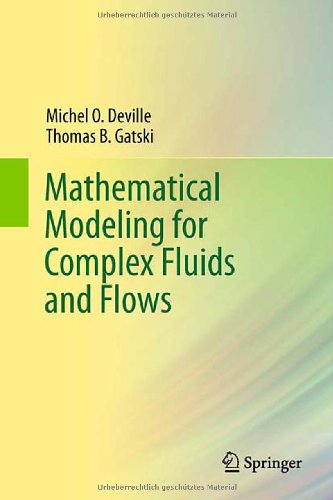

Most ebook files are in PDF format, so you can easily read them using various software such as Foxit Reader or directly on the Google Chrome browser.
Some ebook files are released by publishers in other formats such as .awz, .mobi, .epub, .fb2, etc. You may need to install specific software to read these formats on mobile/PC, such as Calibre.
Please read the tutorial at this link: https://ebookbell.com/faq
We offer FREE conversion to the popular formats you request; however, this may take some time. Therefore, right after payment, please email us, and we will try to provide the service as quickly as possible.
For some exceptional file formats or broken links (if any), please refrain from opening any disputes. Instead, email us first, and we will try to assist within a maximum of 6 hours.
EbookBell Team

4.0
86 reviewsMathematical Modeling for Complex Fluids and Flows provides researchers and engineering practitioners encountering fluid flows with state-of-the-art knowledge in continuum concepts and associated fluid dynamics. In doing so it supplies the means to design mathematical models of these flows that adequately express the engineering physics involved. It exploits the implicit link between the turbulent flow of classical Newtonian fluids and the laminar and turbulent flow of non-Newtonian fluids such as those required in food processing and polymeric flows.
The book develops a descriptive mathematical model articulated through continuum mechanics concepts for these non-Newtonian, viscoelastic fluids and turbulent flows. Each complex fluid and flow is examined in this continuum context as well as in combination with the turbulent flow of viscoelastic fluids. Some details are also explored via kinetic theory, especially viscoelastic fluids and their treatment with the Boltzmann equation. Both solution and modeling strategies for turbulent flows are laid out using continuum concepts, including a description of constructing polynomial representations and accounting for non-inertial and curvature effects.
Ranging from fundamental concepts to practical methodology, and including discussion of emerging technologies, this book is ideal for those requiring a single-source assessment of current practice in this intricate yet vital field.